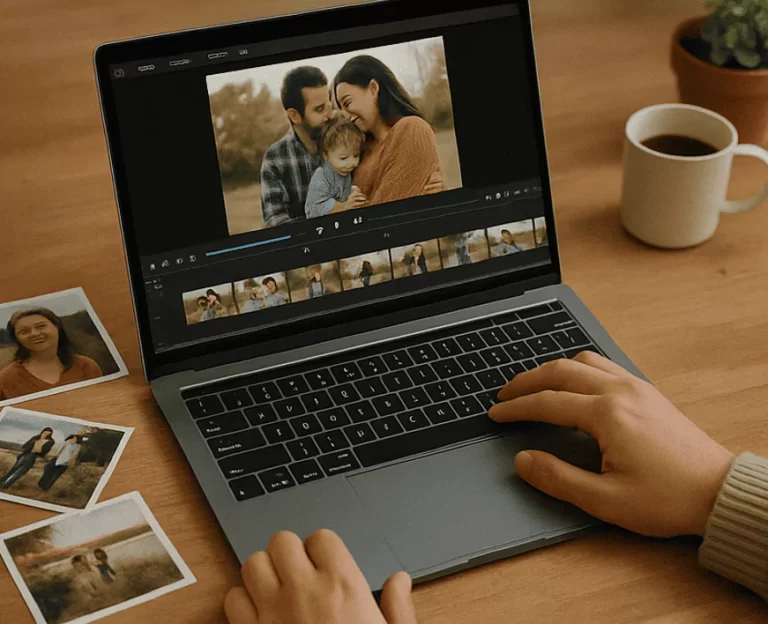
Edit photos Photography is not merely about capturing moments; it’s about shaping them. In an era where visuals dominate communication, the ability to edit photos effectively is as essential as knowing how to use a camera. Professional photo editing transforms raw images into compelling works of art, refining details, enhancing emotions, and creating harmony. This guide unveils the “secret sauce” to mastering the art of photo editing and takes your skills to new heights.
The Philosophy Behind Edit Photos
Before delving into techniques, it’s crucial to understand why we edit photos. Cameras, no matter how advanced, are imperfect at replicating human perception. Light can feel flat, colors may appear muted, or shadows can swallow details. Editing bridges the gap between reality and the artistic vision of the photographer.
It also offers creative freedom. While photography freezes a moment, editing allows you to reinterpret it. A serene landscape can become moody and dramatic, or a candid portrait can be imbued with nostalgia. In short, editing is where creativity flourishes and stories come alive.
Building the Ultimate Editing Toolkit
Professional editing starts with the right tools. The interplay between hardware and software forms the backbone of effective workflows.
1. Software for Precision and Creativity
The software you choose dictates how far you can push your editing. Here are the most powerful tools:
- Adobe Lightroom: A staple in professional workflows, Lightroom excels in global adjustments, organization, and color grading.
- Adobe Photoshop: The industry standard for advanced editing. Photoshop enables precise retouching, composite creation, and pixel-perfect corrections.
- Capture One Pro: Known for its excellent color management and tethered shooting capabilities, it’s ideal for high-end commercial work.
- Affinity Photo: A cost-effective alternative to Photoshop with nearly identical functionality for creative editing.
- Luminar Neo: Leveraging AI, Luminar simplifies complex tasks such as background removal or sky replacement.
2. Hardware That Enhances Editing
The right hardware complements your software, ensuring accurate and efficient editing.
- Monitors: Invest in high-resolution monitors with wide color gamut coverage. Look for models like the Eizo ColorEdge series or BenQ PD line for professional-grade accuracy.
- Graphics Tablets: Tools like the Wacom Intuos Pro provide tactile precision, especially for intricate tasks like retouching or masking.
- Storage Solutions: Editing high-resolution files demands ample storage. Consider SSDs for speed and external drives for backups.
- Calibrators: Devices like X-Rite ColorMunki ensure consistent color accuracy across your workflow.
The Fundamentals of Professional Photo Editing
Even the most complex edits rely on mastering foundational techniques. A solid grasp of the basics is essential for building an advanced skillset.
1. Cropping and Straightening
The simplest adjustments often yield the most striking results. Cropping removes distractions and enhances the composition. Straightening ensures elements like horizons are aligned, which lends a sense of professionalism to any image.
2. Exposure and Contrast
Balancing light and shadow is pivotal. Adjusting exposure brings clarity to dimly lit areas, while tweaking contrast can add depth. Pay attention to the histogram—this visual representation helps maintain a balanced tonal range.
3. White Balance
White balance sets the mood. Warmer tones evoke nostalgia and coziness, while cooler hues suggest calm and serenity. Adjusting white balance ensures that your colors align with your artistic intent.
4. Color Adjustments
Colors are the soul of a photograph. Tools for saturation, vibrance, and hue adjustment breathe life into otherwise flat images. Subtle color grading can even evoke cinematic aesthetics, elevating your image beyond the ordinary.
5. Noise Reduction and Sharpening
Noise, often introduced in low-light conditions, can detract from an image’s quality. Noise reduction smooths graininess, while sharpening accentuates textures like fabric, skin, or landscapes. Achieving balance is critical—overuse can lead to artificial results.
Advanced Techniques to Edit Photos Like a Pro
Once the basics become second nature, advanced techniques offer new avenues for creativity and refinement. These methods transform ordinary photographs into extraordinary visuals.
1. Dodge and Burn
Borrowed from traditional darkroom practices, dodging (lightening) and burning (darkening) specific areas can create depth and guide the viewer’s eye. For example, lightening a subject’s face while darkening the background subtly enhances focus.
2. Frequency Separation
This technique is essential for professional portrait retouching. It separates texture from tone, allowing for precise skin smoothing without losing natural details like pores or hair.
3. HDR Editing
High Dynamic Range (HDR) editing involves blending multiple exposures to retain details in both shadows and highlights. This technique is particularly impactful for landscapes, architecture, and high-contrast scenes.
4. Composite Editing
Creating composites merges elements from multiple photos into a single image. This technique is invaluable in commercial photography, enabling everything from surreal scenes to polished advertisements.
5. Color Grading
Color grading adds a cinematic touch to your images. By subtly altering the tones of shadows, mid-tones, and highlights, you can evoke specific emotions or match a particular style.
Leveraging AI in Modern Photo Editing
Artificial intelligence has revolutionized how we edit photos, offering tools that simplify complex processes.
- Sky Replacement: Tools like Luminar Neo can replace dull skies with vibrant ones, transforming landscapes in seconds.
- Object Removal: Photoshop’s Content-Aware Fill and other AI tools can erase unwanted distractions seamlessly.
- Skin Retouching: AI-powered tools like PortraitPro refine skin textures while maintaining natural details, saving hours of manual labor.
While AI tools offer speed and efficiency, they’re not a replacement for artistic judgment. Use them to enhance your workflow but remain mindful of maintaining authenticity.
Avoiding Common Pitfalls When You Edit Photos
Mistakes can hinder your progress. Awareness of common pitfalls ensures your edits enhance, rather than detract from, your photos.
- Over-Editing: Excessive adjustments—whether oversaturated colors, heavy-handed sharpening, or over-the-top filters—can make images look artificial. Less is often more.
- Inconsistent Style: Maintaining a cohesive editing style is vital, especially for portfolios or social media feeds. Consistency builds your brand and ensures professional appeal.
- Ignoring Calibration: Uncalibrated monitors lead to inaccurate colors. Always calibrate your screens for consistent results across devices and print mediums.
Developing a Signature Editing Style
Creating a signature editing style is a hallmark of professional photographers. While trends can inspire, true artistry comes from personal experimentation. Analyze your favorite edits and identify recurring patterns—this might include your use of colors, contrasts, or specific techniques. Over time, these choices will evolve into a recognizable aesthetic.
Workflow Tips for Efficiency
Editing can be time-intensive, but a streamlined workflow helps maximize productivity without compromising quality.
- Shoot in RAW: RAW files retain more data than JPEGs, providing greater flexibility in post-processing.
- Organize Your Library: Tools like Lightroom’s catalog system allow for efficient organization and retrieval of images.
- Create Presets: Save frequently used adjustments as presets to speed up repetitive tasks.
- Non-Destructive Editing: Always edit non-destructively by working with layers, adjustment layers, or virtual copies.
Staying Inspired in Your Editing Journey
The world of editing is ever-evolving. Stay inspired by exploring new tools, studying the work of other photographers, and embracing experimentation. Attend workshops, participate in online challenges, and seek feedback to refine your skills continuously.
Conclusion: The Power to Transform
To edit photos like a pro is to wield the power of transformation. From technical corrections to creative reimagination, editing turns mere snapshots into timeless art. With the right tools, techniques, and mindset, you can elevate your work to unparalleled levels of sophistication. Let every photo you edit be a reflection of your vision, creativity, and skill.



